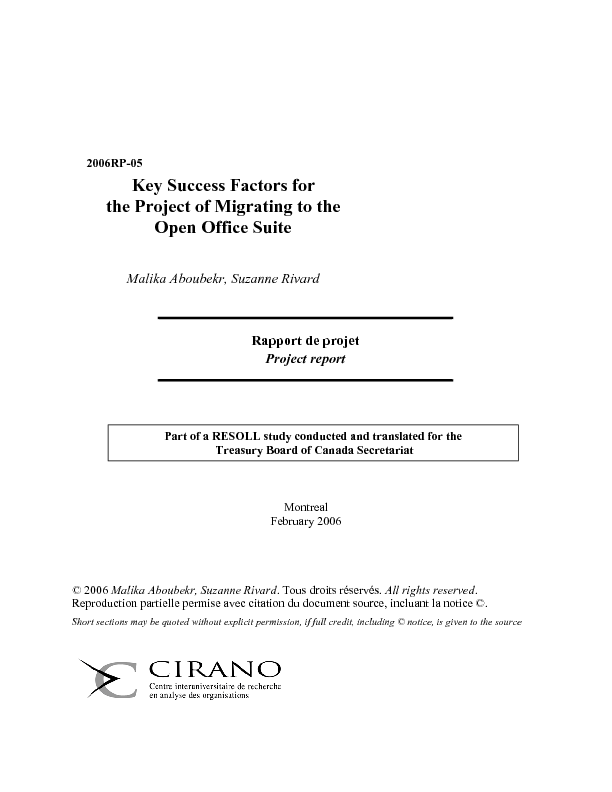Key Success Factors for the Project of Migrating to the Open Office Suite
Principal results
An analysis of the project's characteristics has enabled its specific features to be identified and the analytical tool to be adapted. From this approach, analysis of the key success factors has revealed that the pilot project substantially contributes to the reflection about migrating to free software. It demonstrates that, despite medium to high risk exposure, such a migration can be controlled. This is supported by considerable managerial ability and the reliability of the technology. Finally, it draws attention to a major problem that arises in a migration context: the absence of a shared interoperability framework, as is seen in two out of three parameters. The assessment grid of the project's key success factors (Table 1, p. 6) allows the following to be ascertained:
- The importance of the Risk Assessment and Monitoring factor during the software implementation process. Its estimated value of 3.7, in particular due to the absence of a common interoperability framework and the impossibility of remedying it within the context of the project, lowers the average of the Processes success factor, which is 4.8/7.
- Managerial skills are high (6.2/7), and the values found for this factor's components are generally comparable.
- Technology is assessed at 5.5/7; this parameter covers a contrasted reality:
- The technology's intrinsic characteristics (independence with regard to software and publishers, cost controls, data continuity), assessed at 6.6/7, raise this ratio.
- The technology's performance, assessed at 4.5/7, lowers this ratio. It implicates both the intrinsically high quality of the software tested, and problems due to the context of the pilot projectcharacterized, as it was, by the absence of a migration plan (choice of services/people to migrate) and to the absence of a common interoperability framework.
- The technology's intrinsic characteristics (independence with regard to software and publishers, cost controls, data continuity), assessed at 6.6/7, raise this ratio.




